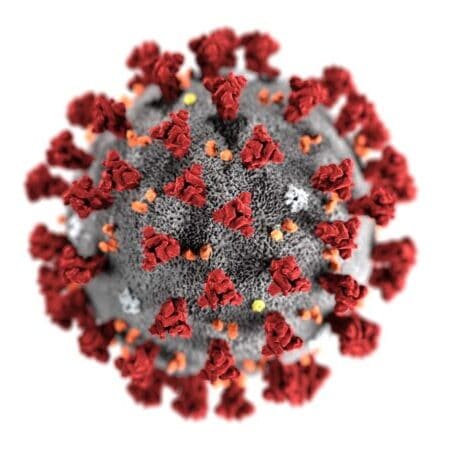In collaboration with the scientists at Nagoya Medical Center and Japan Science and Technology Agency, scientists at Nagoya University have developed a novel rapid in vitro method to identify antibody-like proteins that capture and neutralize SARS-CoV-2.
Employing the method, the researchers identified nine antibody-like proteins (ALPs) that bind SARS-CoV-2. Of the total nine identified ALPs, four exhibited viral neutralizing activity. The findings are published online in the journal Science Advances on September 18, 2020 (Kondo et al., 2020).
Rapid Detection Method for SARS-CoV-2
Since the emergence of the pandemic in mid-December 2019, the disease Covid-19 causes enormous suffering to the global community. As of September 19, 2020, the virus SARS-CoV-2 infected over 30 million people globally, costing 956,864 lives (Worldometer 2020).
To control a disease like Covid-19, it is paramount that scientists have both a rapid detection method for the pathogens that cause disease and for identifying neutralizing agents against the pathogen.
In the case of Covid-19, most researchers have focused on identifying whole antibodies against SARS-CoV-2 that cause the disease Covid-19. Less research has been conducted to determine ALPs that can also offer similar diagnostic and therapeutic advantages.
The reasons for less research on SARS-CoV-2 specific ALPs may lie on the drawbacks in the methods commonly used to identify ALPs. For example, Phage Display(Smith 1985), the most commonly used method, generates relatively smaller libraries, limiting this approach’s utility in a recent outbreak such as SARS-CoV-2.
Another method, mRNA Display(Roberts et al., 1997), generates sufficiently large libraries, but the method is time-consuming, taking up to several weeks to yield the results.
TRAP Method to Identify SARS-CoV-2 Spike Protein

To find a solution, Taishi Kondo & colleagues modified a method they previously developed (Kawakami et al., 2013), called TRAP Display, which modernizes two of the most time-consuming early steps in the mRNA Display protocol. Kondo et al. used their TRAP display method and succeeded in identifying nine ALPs that bind to the S1 subunit of the SARS-CoV-2 spike protein complex, within four days instead of several weeks.
Of these nine ALPs, four showed an affinity for the spike protein domain that binds the ACE2 receptor, suggesting that these ALPs may neutralize the virus’s ability to bind to ACE2 on human cells. Of these four ALPs, one blocked SARS-CoV-2’s ability to infect cultured cells in vitro.
The scientists then used the high-affinity ALP to capture SARS-CoV-2 viral particles from nasal swab samples, demonstrating the ALP’s potential for diagnostic tests.
“The high-speed in vitro selection of antibody-like proteins would be useful for the rapid development of a detection method and a neutralizing protein against a virus responsible for an ongoing, and possibly a future, pandemic”—the authors write.


















